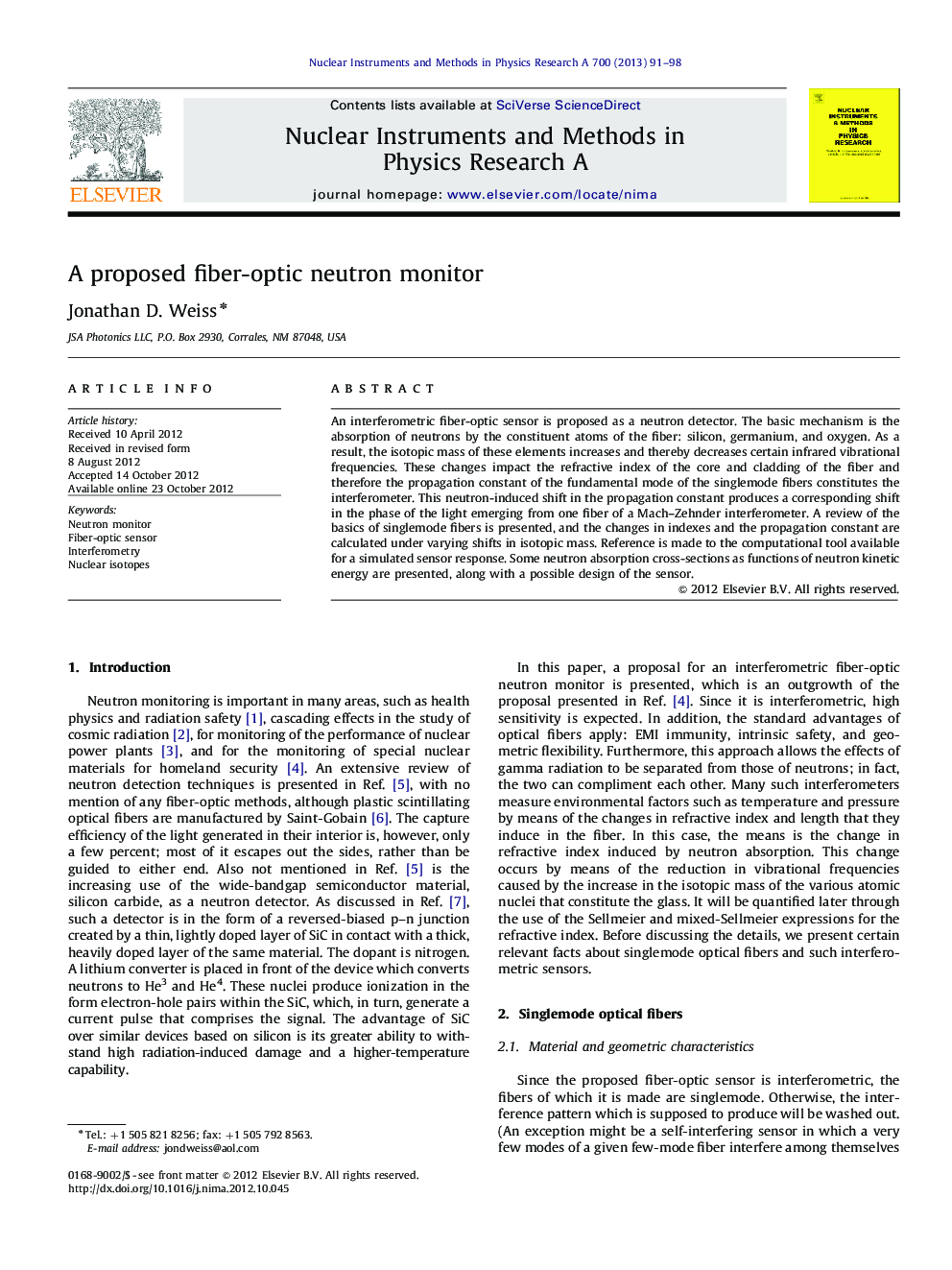| Article ID | Journal | Published Year | Pages | File Type |
|---|---|---|---|---|
| 1823403 | Nuclear Instruments and Methods in Physics Research Section A: Accelerators, Spectrometers, Detectors and Associated Equipment | 2013 | 8 Pages |
An interferometric fiber-optic sensor is proposed as a neutron detector. The basic mechanism is the absorption of neutrons by the constituent atoms of the fiber: silicon, germanium, and oxygen. As a result, the isotopic mass of these elements increases and thereby decreases certain infrared vibrational frequencies. These changes impact the refractive index of the core and cladding of the fiber and therefore the propagation constant of the fundamental mode of the singlemode fibers constitutes the interferometer. This neutron-induced shift in the propagation constant produces a corresponding shift in the phase of the light emerging from one fiber of a Mach–Zehnder interferometer. A review of the basics of singlemode fibers is presented, and the changes in indexes and the propagation constant are calculated under varying shifts in isotopic mass. Reference is made to the computational tool available for a simulated sensor response. Some neutron absorption cross-sections as functions of neutron kinetic energy are presented, along with a possible design of the sensor.
► An interferometric fiber-optic neutron monitor has been proposed. ► Operation is based on the increased mass of the atoms caused by neutron absorption. ► The increase modifies the glass refractive index, leading to optical interference. ► Calculations of its response are presented, but more detailed modeling remains.
